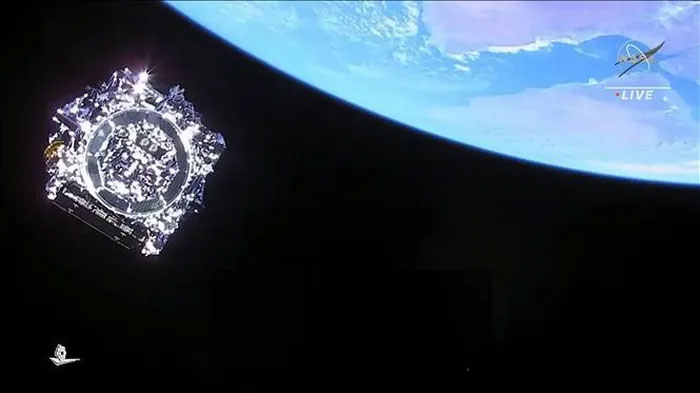On June 29, NASA Administrator Bill Nelson announced that the agency will unveil the “deepest images of the universe” captured by the James Webb Space Telescope.
Speaking at a press conference at the Space Telescope Science Institute in Baltimore, Nelson stated that the images will be revealed on July 12. He emphasized : “This location is farther than any point humanity has ever seen before”.

The James Webb Space Telescope separates from the Ariane 5 rocket after being launched into orbit at the Guiana Space Centre in Kourou, France, on December 25, 2021. (Photo: AFP/TTXVN)
The Space Telescope Science Institute in Baltimore is the coordinating center for the operations of the James Webb Telescope – the next generation of the legendary Hubble Telescope and a super telescope of unprecedented size and complexity.
Valued at $10 billion, James Webb was launched into space in December 2021 and operates in an orbit around the Sun, 1.5 million kilometers away from Earth, much farther than the Hubble Telescope, which has been operating in Earth’s orbit at an altitude of about 610 kilometers since 1990.
Regarded as “a marvel of engineering”, James Webb can look deeper into the universe than any previous telescope, thanks to its 6.5-meter diameter mirror (three times larger than Hubble), composed of 18 hexagonal mirror segments, and instruments focused on infrared light, allowing this telescope to see through dust and gas.
Nelson stated: “This telescope will explore objects in the solar system and the atmospheres of exoplanets orbiting other stars, giving us clues as to whether their atmospheres are similar to ours.”
The infrared capabilities of James Webb enable it to observe deeper in time, back to the moment of the Big Bang that occurred 13.8 billion years ago.
According to NASA Deputy Administrator Pam Melroy, due to the smooth rocket launch skills of partner company Arianespace (France), the James Webb Telescope could operate for 20 years, double its originally projected lifespan. Melroy emphasized: “Those 20 years will not only allow us to delve deeper into history and time but also into science as we have the opportunity to learn, grow, and make new observations.”
On July 12, NASA is also expected to share the first spectrum image of James Webb of an exoplanet. A spectrum is a tool for analyzing the chemical and molecular composition of distant objects, and planetary spectra can help describe characteristics of the atmosphere and other properties, such as the presence of water or the nature of the surface.


















































